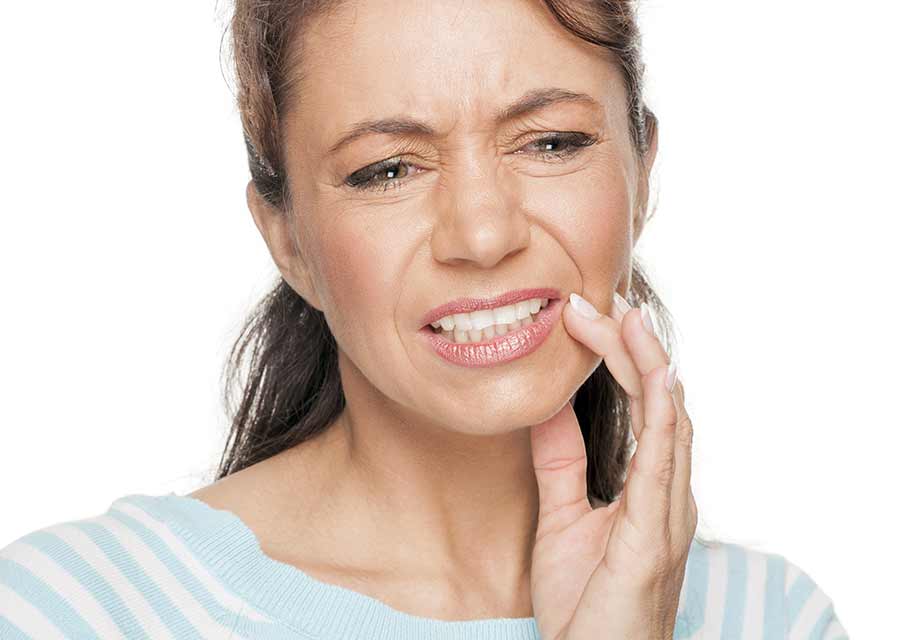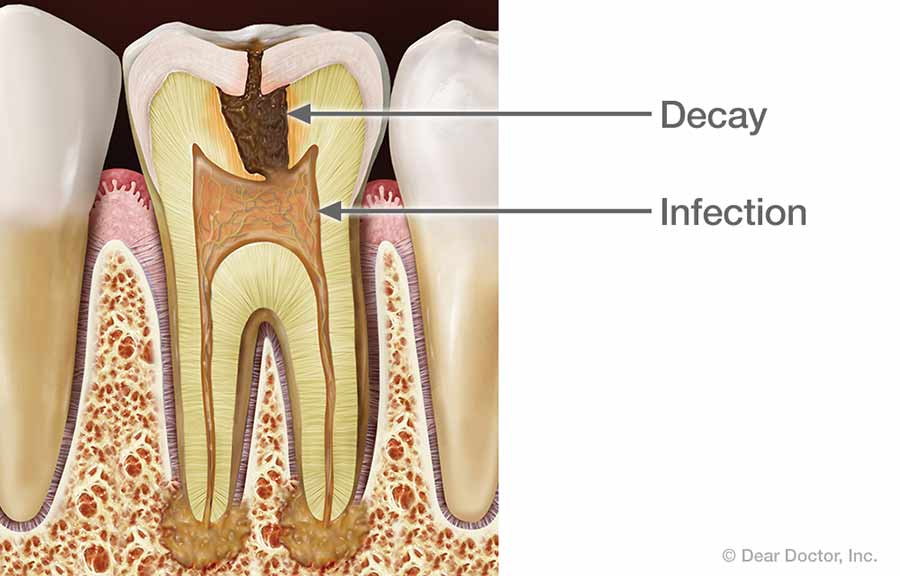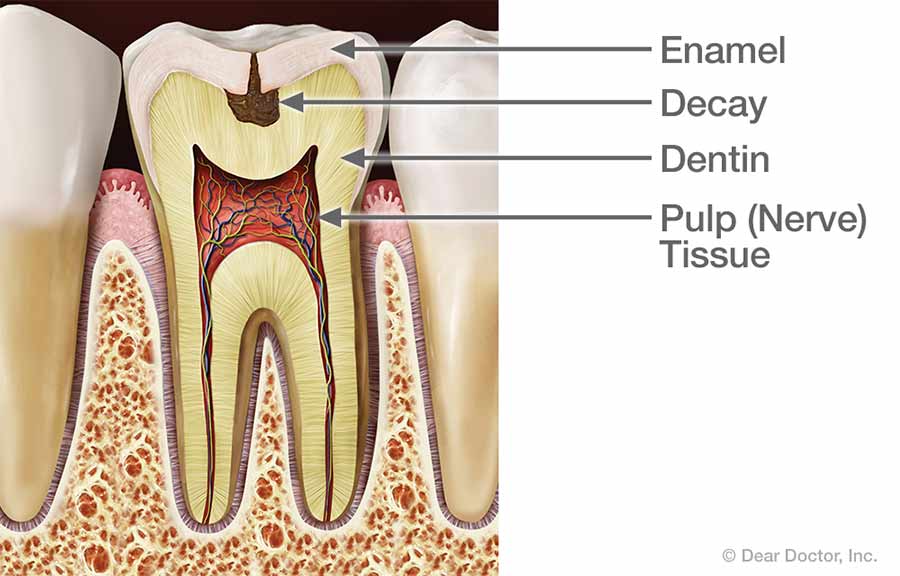Tooth Pain
 The sensation of tooth pain — ranging from minor aching and sensitivity to acute distress — is something almost everyone has experienced at one time or another. In general, pain is a protective response from the body, telling you that something is wrong. But tooth pain can be troublesome because it's often hard to pinpoint exactly where it's coming from, and it may come and go in response to other stimuli — eating hot or cold foods, for example.
The sensation of tooth pain — ranging from minor aching and sensitivity to acute distress — is something almost everyone has experienced at one time or another. In general, pain is a protective response from the body, telling you that something is wrong. But tooth pain can be troublesome because it's often hard to pinpoint exactly where it's coming from, and it may come and go in response to other stimuli — eating hot or cold foods, for example.
A few non-dental problems, such as sinus infections, cluster headaches, and certain diseases or drugs, can cause tooth pain. But by far the most common cause is tooth decay, a bacterial infection that can spread through many parts of the tooth, and even into the gum tissue. Traumatic damage and gum disease can also result in tooth pain.
How can you tell what's causing your pain? The only way to know for sure is to see your dentist. He or she will ask detailed questions about what you're feeling and perform a variety of diagnostic tests, normally including x-rays, to try and identify the exact source of the pain. However, there are some general ways to describe the sensations you may be experiencing — and their potential cause.
Severe Pain
 Constant, severe pain and pressure, swelling of the gums, and sensitivity to touch indicate an infection in the tooth, possibly accompanied by an abscess (inflamed, pus-filled sac) in the surrounding tissue. In this case, it's important to see a dentist or endodontist (root canal specialist) right away — not only to relieve the pain, but also to save the tooth while it's still possible. Lingering pain after eating hot or cold foods also usually indicates disease in the pulp tissue deep inside the tooth. Even if the pain goes away temporarily, the infection won't — in fact, it can spread and cause significant damage. Make an appointment to see your dentist as soon as possible; a root canal may be needed to ease the pain and preserve the tooth.
Constant, severe pain and pressure, swelling of the gums, and sensitivity to touch indicate an infection in the tooth, possibly accompanied by an abscess (inflamed, pus-filled sac) in the surrounding tissue. In this case, it's important to see a dentist or endodontist (root canal specialist) right away — not only to relieve the pain, but also to save the tooth while it's still possible. Lingering pain after eating hot or cold foods also usually indicates disease in the pulp tissue deep inside the tooth. Even if the pain goes away temporarily, the infection won't — in fact, it can spread and cause significant damage. Make an appointment to see your dentist as soon as possible; a root canal may be needed to ease the pain and preserve the tooth.
Sharp pain when biting down on food can be caused by severe tooth decay, a loose filling, a crack in the tooth, or possibly by damaged pulp tissue inside the tooth. It should be evaluated by a dentist as soon as possible. Depending on the cause, treatment may involve filling, bonding, root canal therapy, or other procedures.
Mild Toothache
 If you have minor tooth pain, examine the tooth for signs of decay (a small hole or brown spot, for example) and check the area around it for sores or swelling, which could indicate an infection or injury. Also try flossing on either side of the tooth to see if anything is stuck there. Minor tooth pain can often be relieved with an ice pack applied to the jaw (from the outside) and/or over-the-counter pain relievers or anti-inflammatory medication such as Ibuprofen — which should be swallowed, never rubbed on the gums.
If you have minor tooth pain, examine the tooth for signs of decay (a small hole or brown spot, for example) and check the area around it for sores or swelling, which could indicate an infection or injury. Also try flossing on either side of the tooth to see if anything is stuck there. Minor tooth pain can often be relieved with an ice pack applied to the jaw (from the outside) and/or over-the-counter pain relievers or anti-inflammatory medication such as Ibuprofen — which should be swallowed, never rubbed on the gums.
However, it's often very difficult for an average person to accurately determine what is wrong with a painful tooth. That's why you should see a dentist as soon as possible: to intercept any problem at the early stage, and minimize your treatment needs. Remember, any tooth that hurts for more than a day is not normal — and even if symptoms go away, the problem usually doesn't.
Sensitivity
Occasional or momentary sensitivity to hot or cold foods may be caused by a tiny area of decay, a loose filling, or a small amount of gum recession that has exposed the roots of the teeth. To alleviate the symptoms, you can try using a soft brush and toothpaste formulated for sensitive teeth, for a couple of weeks. If that doesn't help, call your dentist to schedule an appointment. Dental treatment itself sometimes causes temporary sensitivity, which can often be relieved by the same methods. If pain persists or grows worse, however, be sure to seek treatment.